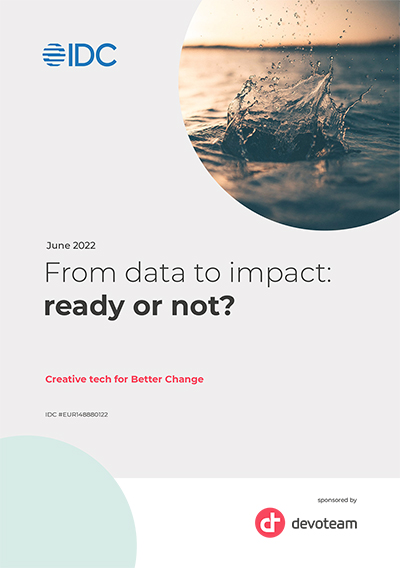The future is bright for organizations that are better prepared to adapt, pivot, and seize new opportunities. Data Thrivers are quickly reimagining their business future with new data architectures to get more value from their data.
Rise of DataOps as the Next Frontier
IDC sees newer methodologies such as DataOps becoming more strategic. DataOps is not one tool, but a full pipeline comprising multiple tools and technologies that are connected. To prepare, organizations need to:
- Treat data as a product and build self-service analytics
- Support more integration and automate testing at various points within the data life cycle
- Take a cloud platform approach to data management
- Explore data mesh architectures to improve autonomy and flexibility with decentralized infrastructure and teams but centralized governance
- Ensure faster collaboration between smaller autonomous teams to improve the speed of data for business
IDC predicts that by 2023, 60% of organizations will start implementing DataOps programs to reduce data and analytics errors by 80% and to boost trust in analytics outcomes and the efficiency of data workers.
10 Best Practice Steps to Start Implementing Today
- Always start with a business purpose and a clearly defined data strategy involving key stakeholders.
- Identify the right use cases and the right data associated with them. Identifying customer pain points and working backwards is key to success.
- Know the roadblocks on your data journey, whether it be lack of trust in insights, limited skills, lack of buy-in from key stakeholders, a disconnect between business outcomes and data initiatives, or complexities in synthesizing multiple sources of information. This can help identify the right architecture for your needs.
- Adopt cloud-native and cloud platforms to meet data objectives.
- Make compliance, governance, and data ownership center stage. Having data contracts and a culture of ownership can help improve data quality.
- Having a common data layer where all data is continuously cleansed and curated and ready for use by different data consumers is a powerful strategy. But ensure that enough flexibility is built in so data professionals can use the platforms of their choice.
- You are as good as your weakest link. Don’t ignore any aspect of the data life cycle when modernizing the data foundation.
- Learn from Data Thrivers. Continuously move to the next frontier — investing in responsible AI, ensuring AI and ML models are compliant, and associating explainability with security are all table stakes.
- Choose a technology partner that can turn ideas into production at the speed of data.
- Make sure your data counts in the best possible way to have a positive impact on your employees, customers, industry, and wider society and economy.
